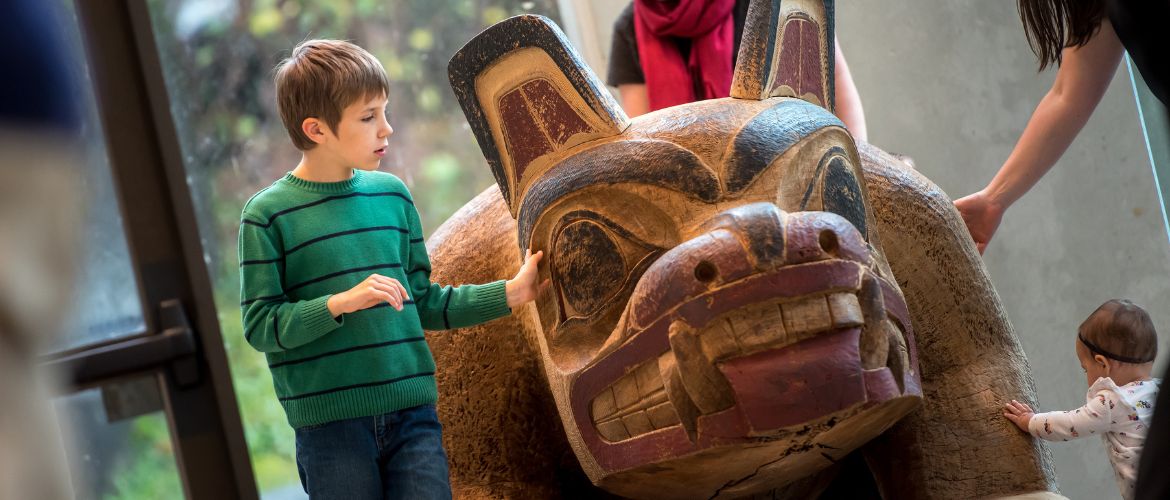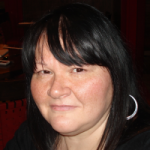Transformative Educational Leadership Journal | ISSUE: Fall 2021
In this exploration about Indigenous education in Canada, Jo Chrona uses a stance of curiosity to help a colleague come to terms with his big question around why the BC Curriculum specifically includes Indigenous knowledges and perspectives. This question is so common as to be a cliché – and Jo’s response opens those who ask it to a new paradigm.
By Jo Chrona
We know that no education system is culturally neutral. Education systems reflect what is valued by the people who create them.
Canada has education systems that have evolved from the post-industrial British model of education designed for a specific place and purpose. These have changed to some degree, but our systems still reflect the priorities of the people who create(d) and work(ed) in the system, along with those who, while not actively a part of the system, exert(ed) influence on education policy.
In previous years, when educators engaged in conversations about Indigenous education the discussion generally reflected an approach with those learners based on a deficit model of education. If First Nations, Inuit, or Métis children were not achieving K-12 educational outcomes it was because of deficits in the learners that needed to be addressed or fixed, or that it was the fault of their families or communities.
Recently, the conversation has begun to shift.
There is increasing understanding that effective education systems respond to the learners they serve by ensuring that learners see themselves reflected in the curriculum, the resources, and their learning environments.
This process has come to be termed by many researchers as “culturally relevant” or “culturally responsive” teaching, and it has been identified as a necessary element of student success (Allen&Labbo, 2001; Gay, 2002; Ladson-Billings, 1995; Young, 2010). Nichol, Archibald and Baker (2012) define culturally responsive education as “an approach to teaching and learning that facilitates critical consciousness, engenders respect for diversity, and acknowledges the importance of relationships, while honouring, building upon, and drawing from the culture, knowledge and language of the students, teachers, and local community” (p.5).
Anti-racist work in our education system
Culturally relevant or culturally responsive education, a vital part of the anti-racist work that continues to be needed in our education systems, requires:
- a deeper understanding of how the concepts of identity and culture intersect with learner success in the school system, and
- the awareness that in order for many educators to develop their understanding of that intersection, they must first be able to identify how their own cultural values and identities influence their own pedagogical beliefs and practices.
At a recent workshop, a teacher asked me if I thought the goal was to create a culturally neutral system. The answer is “of course not”. First, that would be an impossibility. We each exist within culture(s). When we interact with the world, we create cultures that reflect what we value. In education this includes what knowledge or knowledge systems are valued, what is considered important to teach and to learn, how teaching and learning should be done, how education systems should be structured, and what processes they should follow.
All education systems that develop from a homogenous society and context are usually culturally relevant to that place and time. They invariably reflect the cultural assumptions, social mores, and world-views of the people/society that create it. We usually only begin to conceptualize the need for culturally relevant or culturally responsive education when an education system that has developed in one context is imposed on learners from different contexts. For example, when we think about how to begin to address colonialism and the attempted assimilation of Indigenous peoples, and about how education systems have been hostile places for most First Nations, Inuit, or Métis learners, we can quickly come to understand the need to create culturally responsive education environments for these learners. In their learning experiences, First Nations, Inuit, or Métis learners need to see and hear that they – their families, communities, histories and cultures – are valued and important.
We usually only begin to conceptualize the need for culturally relevant or culturally responsive education when an education system that has developed in one context is imposed on learners from different contexts.
But what if you do not have First Nations, Inuit, or Métis learners? To what extent is it important for all educators and students to learn about First Nations, Métis, and Inuit communities, cultures, and histories?
Indigenous content in BC Curriculum
A number of years ago I was part of a small group of English Language Arts (ELA) teachers from across the province who were gathered for a meeting to discuss potential directions for revisions to the K-12 ELA curriculum in British Columbia. The Ministry of Education representative had indicated that one of the changes needed was increased Indigenous knowledge and perspectives in the curriculum.
A long-time teacher was not completely comfortable with this requirement. He said, “I understand the need for cultural relevancy and cultural responsiveness. If I have First Nations, Inuit, or Métis learners in my class, they need to see who they are reflected in the classroom. But I don’t have any Indigenous students. There may be two in the entire school. I have students whose families have been in Canada for multiple generations and students whose families have come to Canada from different countries around the world in recent years.” He then asked, “Why is Indigenous content and perspective now going to be specifically mandated in the BC curriculum, and not the heritages of all other students in our schools?” He suggested that if Indigenous knowledge was specifically mandated, then every other cultural heritage should be mentioned or else we were privileging one heritage over another.
I thought about this for a minute before responding. I knew that this was going to be a common question in the years to come.
Questions to consider
I asked him to think about the places in the world where his students or their families had come from, whether they arrived last week or had been in Canada for over 150 years.
I asked if the languages of those places were still being spoken in those places.
I asked if the knowledge of the people of those places was still being taught and learned in schools there.
I asked if the written and oral literature connected to the land of those places was still thriving.
He thought about these questions for a moment before nodding his head, “Yes, yes, and yes.”
What he came to understand that this place (in the land we call British Columbia) is the only place in the world that the First Nations languages of this place exist, where the oral and written literatures of First Nations here grow from, where the knowledge systems of First Nations here are rooted in the land. If the languages do not exist here, if the knowledge and perspectives are not taught and learned here, they do not exist elsewhere in the world. The teacher came to speak with me a little later that day. He said, “I get it.” And asked rhetorically, ‘If [the learning does] not [take place] here, then where?’”
Indigenous education in Canada
This conversation highlights the unique work of Indigenous education in Canada. Indigenous education is not multicultural education. Multiculturalism in Canada, in its popular interpretation, recognizes, celebrates, and embraces existing cultures from around the world. Officially, it was a political strategy made into policy in 1971 “as a way to address contesting language, cultural, and land claims within the nation, and it has since been widely explained, defended, and critiqued” (St. Denis, 2011).
In education, attempts to embed Indigenous education within a conversation about multiculturalism denies the distinctness of First Nations, Inuit, and Métis, and undermines actions to acknowledge Indigenous rights.
Not only do First Nations, Inuit, and Métis not have representations of their cultures elsewhere, trying to embed First Nations, Inuit and Métis into the multicultural narrative ignores, or tries to deny, the specific land-based rights that Indigenous peoples have in this land. The multifaceted nature of Indigenous education, as well as the historical context that many of us were raised and educated within requires us to reflect on the gaps we have in our own knowledge and understandings of the cultures, histories, and contemporary contexts of First Nations, Inuit, and Métis peoples, and determine how to address those gaps in order to help move our education systems forward in a better way. This may not be easy work, but it is a part of the vital work of Reconciliation in education.
References
- Allen, J. & Labbo, L. (2001). Giving it a second thought: Making culturally engaged teaching culturally engaging. Language Arts, 79(1), 40-52
- Gay, G. (2002). Preparing for Culturally Responsive Teaching. Journal of Teacher Education, 53, 106 - 116.
- Ladson-Billings, G. (1995). Toward a theory of culturally relevant pedagogy. American Educational Research Journal, 32(3), 465-491.
- Young, E. (2010). Challenges to conceptualizing and actualizing culturally relevant pedagogy: How viable is the theory in classroom practice? Journal of Teacher Education, 61(3), 248-260.
- Nicol, Cynthia & Archibald, Jo-ann & Baker, Jeff. (2012). Designing a model of culturally responsive mathematics education: Place, relationships and storywork. Mathematics Education Research Journal, 25.
- St. Denis, V. (2011) "Silencing Aboriginal Curricular Content and Perspectives Through Multiculturalism: “There Are Other Children Here”"). Aboriginal Policy Research Consortium International (APRCi), 268.



Excellent article Jo. If not here, then where- words to live & to teach by.